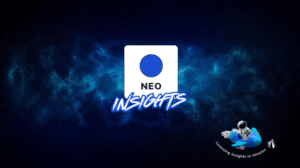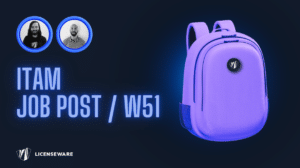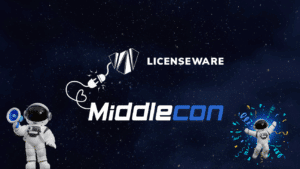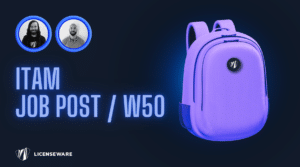How Three Distinct Models Are Reshaping Software Licensing
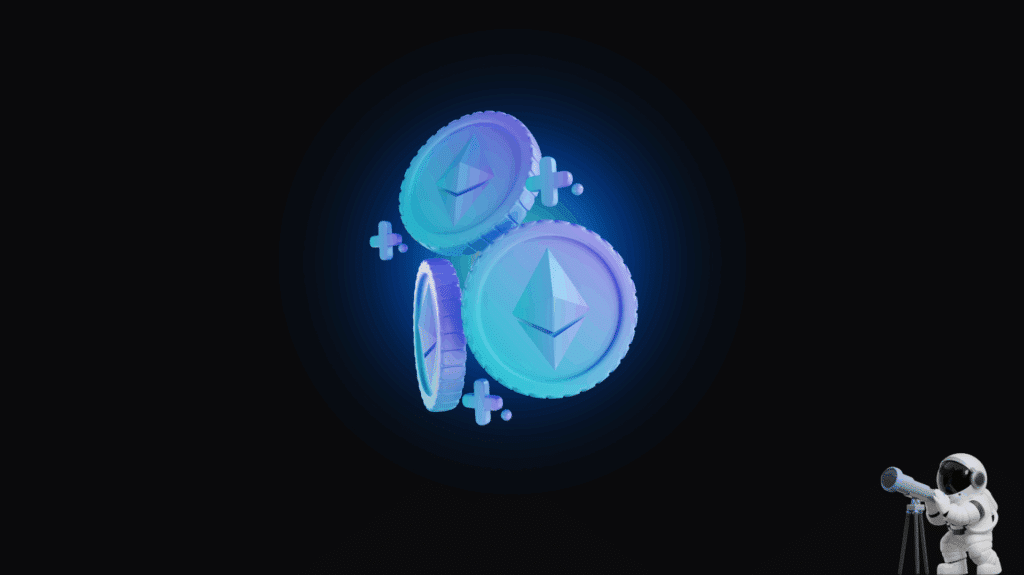
The software industry is experiencing a new big shift in how licenses are structured, priced, and consumed. While the term “token-based licensing” has gained significant traction lately with the advent of AI, it encompasses three distinctly different approaches that are often conflated but serve vastly different purposes. Understanding these distinctions is crucial for businesses navigating the evolving landscape of software procurement and vendors seeking to optimize their licensing strategies.
The Three Faces of Token-Based Licensing
The confusion surrounding token-based licensing stems from the fact that three separate technological paradigms have converged on the same terminology, each addressing different challenges in software distribution and consumption.
Traditional Software Licensing Tokens
The most established form of token-based licensing emerged from enterprise software vendors seeking to simplify complex product portfolios. Companies like Thales, IBM, and Autodesk have pioneered this approach, where tokens function as a universal currency across their software suites[1].
Darim Rahmatallah, Senior Product Manager at Thales, explains the fundamental shift: “Token licensing is a solution for vendors looking to simplify the way they price and package while providing ultimate end customer flexibility”[1]. This model transforms the traditional fixed-license approach by allowing customers to purchase a pool of tokens that can be allocated across different products and features based on actual usage patterns.
The mechanics are elegantly simple yet powerful. Instead of purchasing specific quantities of individual software products, customers buy tokens that can be “spent” on features assigned varying token values. High-value features like advanced analytics modules might require more tokens than basic functionality, similar to how premium arcade games cost more tokens than standard ones[1].
IBM’s implementation demonstrates the practical benefits of this approach. Their token licensing model allows customers to “simplify license administration, avoid juggling multiple contracts, and streamline vendor interactions”[2]. For organizations managing complex software environments, this represents a significant operational improvement over traditional per-seat or per-module licensing.
AI and API Tokens
The second and most common category of token-based licensing has emerged recently from the artificial intelligence and API economy, where tokens represent units of computational consumption rather than software access rights. This model, exemplified by OpenAI’s pricing structure and subsequently adopted by the rest of the industry, treats tokens as the fundamental unit of text processing [3].
In the AI context, tokens are linguistic building blocks, individual words, parts of words, or punctuation marks that AI models process. OpenAI’s approach charges customers based on both input tokens (the text sent to the API) and output tokens (the response generated), creating a direct correlation between usage and cost[3].
This granular measurement system offers unprecedented transparency in pricing. A simple query like “What are the benefits of token-based licensing?” might consume 10 input tokens and generate a 21-token response, resulting in a total charge for 31 tokens[3]. This precision allows businesses to predict costs accurately and optimize their AI usage patterns.
The scalability advantages are particularly compelling for businesses with variable AI needs. As one industry analysis notes, “Since usage is based on tokens, you only pay for what you use. This makes it highly scalable for businesses with fluctuating or unpredictable needs”[3]. Companies can experiment with AI capabilities without committing to fixed subscription costs, lowering the barrier to adoption.
Blockchain Tokens
The third paradigm represents perhaps the most revolutionary approach for licensing: blockchain-based tokens that encode software licenses directly into distributed ledger technology. This Token-as-a-License (TaaL) model, as described by EZYcount CEO Vivien Fuhrer, “drastically simplifies the creation, management, and distribution of software licenses for software producers”[4].
Blockchain tokens offer unique advantages that traditional licensing cannot match. The immutable nature of blockchain records creates an unalterable audit trail of license ownership and transfers. Smart contracts can automatically enforce license terms, reducing the need for complex digital rights management systems[4].
Perhaps most significantly, blockchain tokens enable license transferability in ways previously impossible. As Fuhrer explains, “The biggest advantage is for the user to re-sell unused tokens. As the software producer can easily control the validity of a token, checking it against the blockchain, users are completely free to trade the tokens anywhere and as they see fit”[4].
This creates a secondary market for software licenses, potentially reducing waste and improving resource allocation across organizations. However, the technology also introduces new challenges, including potential security vulnerabilities and the technical complexity of blockchain implementation.
Convergent Benefits, Divergent Applications
Despite their different technological foundations, all three token models share common advantages that explain their growing adoption. Flexibility emerges as the primary driver across all implementations. Whether allocating traditional software tokens across product features, scaling AI usage based on demand, or transferring blockchain licenses between users, tokens provide unprecedented adaptability.
Cost transparency represents another shared benefit. Traditional software licensing often obscures true usage costs through complex bundling and tiered pricing structures. Token-based models, regardless of type, create direct relationships between consumption and cost, enabling more accurate budgeting and resource optimization.
The simplification of vendor relationships also spans all three models. Instead of managing multiple contracts for different software products, organizations can consolidate their relationships around token purchases. This reduces administrative overhead and streamlines procurement processes.
Strategic Implications for Organizations
The proliferation of token-based licensing models requires organizations to develop new competencies in software asset management tooling. Traditional approaches must evolve to encompass token optimization and usage analytics.
For traditional software tokens, organizations need robust monitoring systems to track token consumption across different products and user groups. The flexibility that makes these systems attractive also creates new challenges in ensuring optimal allocation and preventing waste.
AI token management requires different skills entirely. Organizations must develop capabilities in prompt optimization, response length control, and usage pattern analysis. The granular nature of AI token consumption means that small inefficiencies can compound into significant costs over time.
Blockchain token licensing, while still emerging and not yet widely adopted, will require organizations to develop blockchain literacy and digital wallet management capabilities. The potential for license trading also introduces new considerations around asset management and compliance tracking.
The evolution toward token-based models reflects broader trends in software consumption patterns. The shift from ownership to access, the demand for usage-based pricing, and the need for greater flexibility all point toward continued growth in token adoption.
However, the success of these models will depend on vendors’ ability to balance flexibility with simplicity. While tokens offer unprecedented customization options, they also introduce new complexities that organizations must navigate. As they evolve, token license models may fundamentally reshape the relationship between vendors and customers, creating new possibilities for innovation, efficiency, and value creation across the entire software ecosystem.
References
[1] Thales CPL. “Token Licensing is Taking Off: Here’s Why.” April 4, 2022. https://cpl.thalesgroup.com/blog/software-monetization/token-licensing-is-taking-off
[2] IBM. “Token Licensing Concepts and Management.” https://www.ibm.com/support/pages/system/files/inline-files/Token%20Licensing%20Concepts%20and%20Management.pdf
[3] FROMDEV. “OpenAI Token-Based Licensing: A Comprehensive Guide.” October 5, 2024. https://www.fromdev.com/2024/10/openai-token-based-licensing-a-comprehensive-guide.html
[4] FinTech Weekly. “Token-as-a-License, Blockchain’s next evolution.” June 11, 2018. https://medium.com/fintech-weekly-magazine/token-as-a-license-





